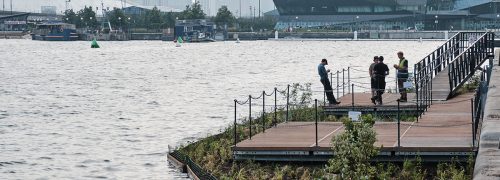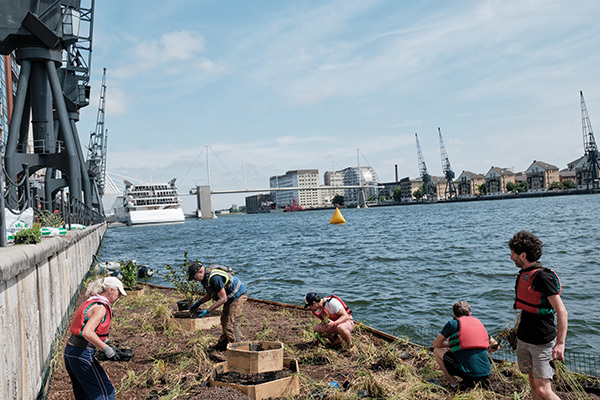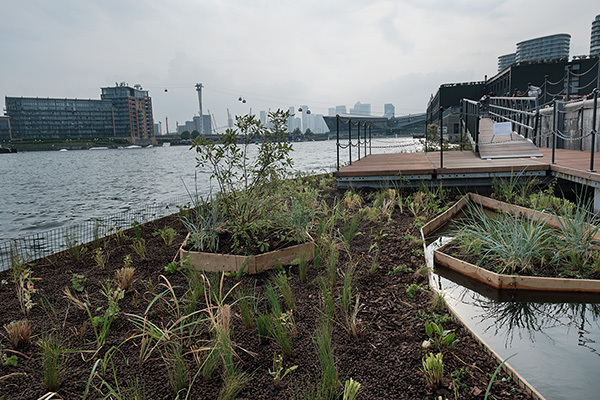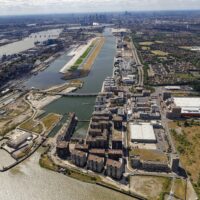
Community news
Royal Docks Team invite you to sit back and relax on the first ever floating garden in East London
The Royal Docks Team are proud to announce the unveiling of the first-ever floating garden in east London, enabling access down to the water. The garden, which is located on the northern side of Royal Victoria Dock and measures an impressive 315 square metres, provides a floating wetland habitat for around 4,000 aquatic plant species and will create a unique and prominent hotspot of urban biodiversity for all to enjoy.
Deputy Mayor for Environment and Energy, Shirley Rodrigues, said: “We welcome unique and innovative approaches that help make London greener and improve Londoners’ access to green space. This new floating ‘pocket park’ will provide a home for a range of plants and insects in a former industrial part of the capital helping to ‘green the grey’.
“It will also provide a new accessible green space for Londoners to enjoy, which has become an even more important part of city life since the pandemic.”
The idea for this unique floating platform of life was developed through the consultation for the Royal Docks Public Realm Framework and Royal Docks Design Guides. It will support people’s priorities to increase soft landscaping and provide access to the water. The team was keen to maximise the unique feature of the water as a space for environmental sustainability, delivering a haven for life above and below the waterline. The result is a unique buoyant tennis court-sized garden platform built with non-toxic materials to support an ecosystem and habitat for birds, fish and pollinators and a perfect getaway for general relaxation and discovery.


Image credits: Kiron Ponnath and the Royal Docks Team
Mayor of Newham and Co-chair of the Royal Docks Enterprise Zone Board, Rokhsana Fiaz OBE, said: “The wonderful floating garden introduced in our historic Royal Docks is an impressive array of aquatic plants that will enhance the beauty and ecological significance of this amazing part of Newham. As we witness the impact of climate change and its devastating consequences to our planet, the garden contributes to our wider agenda to support a range of environmental and biodiversity initiatives across the borough to enhance a variety of ecosystems which we desperately need to protect and save. The floating garden also provides a breath-taking opportunity for local residents and Londoners to enjoy the natural habitat in the Royal Docks, which in turn supports their wellbeing and health.”
The wonderful floating garden introduced in our historic Royal Docks is an impressive array of aquatic plants that will enhance the beauty and ecological significance of this amazing part of Newham.
Mayor of Newham and Co-chair of the Royal Docks Enterprise Zone Board, Rokhsana Fiaz OBE
The Royal Docks Team worked with Biomatrix, the Royal Docks Management Authority and the London Borough of Newham to develop the garden. As part of the installation for this spectacular new addition to the public landscape, the Royal Docks Team and Biomatrix arranged six planting sessions with local community members, including residents and members of the Public Spaces Community Working Group. The planting sessions provided an opportunity to educate and explained how their participation would contribute to new life, bringing about a supported ecosystem of beneficial microorganisms, fish, bird, and plant life for future generations across the Royal Docks.
Managing Director at Biomatrix, Galen Fulford, said: “The Royal Docks are increasingly becoming a unique waterfront attraction. Until now, the dock edge has been substantially hard-edged with concrete. However, by bringing a natural planted ecology into the docks, the project will provide a pivotal catalyst from hard-edge infrastructure to a living water system, with all the additional green space benefits this provides. As London continues on the path to increasing green spaces as a National Park City, the 4km long Royal Docks delivers one of the most significant opportunities to increase natural space in the city. It introduces natural ecology into this waterbody and facilitates the transition to bring this fantastic water resource to life.
“The Ecosystem design draws inspiration and biomimicry based on the natural ecology of the Thames Estuary, with planting substrate materials integrating the clay, wood, and silt substrates to support a diversity of plant species with over 4,000 individual native plants to be planted.”


